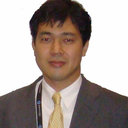Nocturnal hypoxia is associated with silent cerebrovascular disease in a high-risk Japanese community-dwelling population.
Palavras-chave
Resumo
BACKGROUND
Sleep-disordered breathing (SDB) is recognized as a risk factor for cerebrovascular disease. The objective of this study was to investigate the relationship between nocturnal hypoxia and silent cerebral infarct (SCI) in the general population.
METHODS
In the 2001 annual health check in Nishiarita, Japan, 170 individuals at high risk were screened who met more than three of the following criteria: high blood pressure, hypercholesterolemia, left ventricular hypertrophy by electrocardiography, hemoglobinA(1)c >6.5%, proteinuria, central obesity, heavy smoking habit, heavy drinking, and family history of stroke. Overnight pulse oximetry, brain magnetic resonance imaging, and carotid/cardiac ultrasonography were performed in 146 (mean age 67.4 +/- 9.0 years) of the 170 individuals in whom pulse oximetry was successfully performed.
RESULTS
Subjects were classified into a nocturnal hypoxia group (n = 36) and a nonhypoxia group (n = 110) based on a 3% oxygen desaturation index (ODI) 5.6 times per hour during sleep (highest quartile) by pulse oximetry. The presence of silent cerebral infarct (SCI) (57% v 35%, P = .03) was significantly higher in the hypoxia group than in the nonhypoxia group. The number of SCI was positively correlated with age (r = 0.23, P < .01), systolic blood pressure (r = 0.196, P < .05), and 3% ODI (r = 0.318, P < .001). Even after adjustment for confounding factors using logistic regression analysis, nocturnal hypoxia (odds ratio = 2.2, 95% confidence interval = 1.10 to 5.30, P = .026) as well as systolic blood pressure and age (10-year increase: odds ratio = 1.22, 95% confidence interval 1.00 to 1.48, P = .048) were independently associated with SCI in the study subjects.
CONCLUSIONS
Based on the study results, SDB assessed by overnight pulse oximetry was associated with silent cerebral disease in a high-risk, community-dwelling Japanese population.



